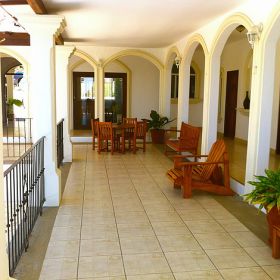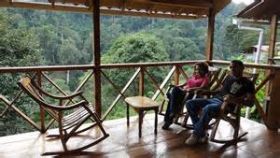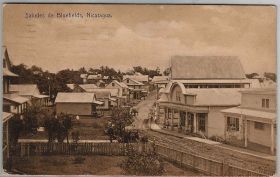Is the electricity reliable in Nicaragua? Are there blackouts or brownouts in Nicaragua?
Mike Cobb - ECI Development
Electricity in Nicaragua is getting better, much better in fact. My home in Managua suffers an outage for an hour or less about once or twice a month. It used to be 2-3 times per week. Rural areas, depending on location, will have outages so people should consider a back up generator or battery system for sure. It is also important to look at the back up systems for water, TV, and telecom in a community to see if the developer has provided a backup system for the basic...
Electricity in Nicaragua is getting better, much better in fact. My home in Managua suffers an outage for an hour or less about once or twice a month. It used to be 2-3 times per week. Rural areas, depending on location, will have outages so people should consider a back up generator or battery system for sure. It is also important to look at the back up systems for water, TV, and telecom in a community to see if the developer has provided a backup system for the basic necessities.
Posted January 19, 2014
Malena Kruger
I live in Managua as well and we get blackouts maybe once a month for an average of about 45 minutes. It is best to get a generator and have lanterns and candles handy for this reason. But it is nothing to get worried about.
I live in Managua as well and we get blackouts maybe once a month for an average of about 45 minutes. It is best to get a generator and have lanterns and candles handy for this reason. But it is nothing to get worried about.
Posted May 9, 2014
Lucy Valenti - Liv Nicaragua
Electricity in Nicaragua is an interesting topic.
Up to 2007, 80% of the electricity in Nicaragua came from fossil fuels, which caused us to be dependent on imported oil from other countries including Venezuela and Mexico. When the price of oil went up, the price of electricity for the people in Nicaragua went up.
In 2007, the government of Nicaragua started to implement a strategy to change how the country of Nicaragua generated electricity with the goal of...
Up to 2007, 80% of the electricity in Nicaragua came from fossil fuels, which caused us to be dependent on imported oil from other countries including Venezuela and Mexico. When the price of oil went up, the price of electricity for the people in Nicaragua went up.
In 2007, the government of Nicaragua started to implement a strategy to change how the country of Nicaragua generated electricity with the goal of...
Electricity in Nicaragua is an interesting topic.
Up to 2007, 80% of the electricity in Nicaragua came from fossil fuels, which caused us to be dependent on imported oil from other countries including Venezuela and Mexico. When the price of oil went up, the price of electricity for the people in Nicaragua went up.
In 2007, the government of Nicaragua started to implement a strategy to change how the country of Nicaragua generated electricity with the goal of relying more on domestic renewable energy. As of now, Nicaragua generates about 50% of its energy from renewable sources. This includes geothermal, hydroelectric, wind, and solar.
Nicaragua is pushing to get an even greater percentage of its energy from renewable sources, up to 80%. Until that happens, we cannot expect prices for electricity to go down. Our theory and goal is that as Nicaragua becomes less dependent on oil and more dependent on renewable energy, we expect that our prices for electricity will decrease, and eventually to be able to export electricity to other countries in Central America.
New building projects in Nicaragua tend to focus on renewable energy as well, as a way to reduce the price of electricity.
The electricity in Nicaragua is pretty reliable. In 2005 or 2006, we had a general crisis in generating electricity, but since then the new strategy has been in place and is being executed, with the result that, if electricity fails, it is because of a local problem, not because the country has run out of electrical generating capacity.
We do, however, have some relatively small problems of reliable electricity in areas of rapid growth, as the country hurries to provide electricity in order to catch up to the development. For example, not too long ago, San Juan del Sur was a very little town, so the need and the ability to provide it with electricity was small. Now, with all the development and tourism in San Juan del Sur, the need for electricity is much greater, and this need happened quickly. As a result, now the government has to invest in providing more capacity, which it is doing.
Up to 2007, 80% of the electricity in Nicaragua came from fossil fuels, which caused us to be dependent on imported oil from other countries including Venezuela and Mexico. When the price of oil went up, the price of electricity for the people in Nicaragua went up.
In 2007, the government of Nicaragua started to implement a strategy to change how the country of Nicaragua generated electricity with the goal of relying more on domestic renewable energy. As of now, Nicaragua generates about 50% of its energy from renewable sources. This includes geothermal, hydroelectric, wind, and solar.
Nicaragua is pushing to get an even greater percentage of its energy from renewable sources, up to 80%. Until that happens, we cannot expect prices for electricity to go down. Our theory and goal is that as Nicaragua becomes less dependent on oil and more dependent on renewable energy, we expect that our prices for electricity will decrease, and eventually to be able to export electricity to other countries in Central America.
New building projects in Nicaragua tend to focus on renewable energy as well, as a way to reduce the price of electricity.
The electricity in Nicaragua is pretty reliable. In 2005 or 2006, we had a general crisis in generating electricity, but since then the new strategy has been in place and is being executed, with the result that, if electricity fails, it is because of a local problem, not because the country has run out of electrical generating capacity.
We do, however, have some relatively small problems of reliable electricity in areas of rapid growth, as the country hurries to provide electricity in order to catch up to the development. For example, not too long ago, San Juan del Sur was a very little town, so the need and the ability to provide it with electricity was small. Now, with all the development and tourism in San Juan del Sur, the need for electricity is much greater, and this need happened quickly. As a result, now the government has to invest in providing more capacity, which it is doing.
Posted July 18, 2014
Daniel Snider - Snider's Realty Nicaragua
 It is very rare that there are blackouts or brownouts in Nicaragua nowadays. You will very rarely see any sort of blackout occur for more than 20 or 30 minutes where I live, in Tola.
It is very rare that there are blackouts or brownouts in Nicaragua nowadays. You will very rarely see any sort of blackout occur for more than 20 or 30 minutes where I live, in Tola. Maybe a few years back I would have given a different answer, when blackouts were a little more common, but nowadays we hardly ever had any sorts of blackouts. If we do there’s some sort of thunderstorm or a light post goes down. They’re very good at fixing...
 It is very rare that there are blackouts or brownouts in Nicaragua nowadays. You will very rarely see any sort of blackout occur for more than 20 or 30 minutes where I live, in Tola.
It is very rare that there are blackouts or brownouts in Nicaragua nowadays. You will very rarely see any sort of blackout occur for more than 20 or 30 minutes where I live, in Tola. Maybe a few years back I would have given a different answer, when blackouts were a little more common, but nowadays we hardly ever had any sorts of blackouts. If we do there’s some sort of thunderstorm or a light post goes down. They’re very good at fixing it, and when there's a problem, it rarely persists for more than 20 to 30 minutes.
I would always recommend to anybody who comes and lives down here to have surge protectors on their appliances just because you’ll never know when you get a thunderstorm that produces a spike and a surge so I would recommend that you protect devices like your computer and your fridge and anything that’s important to you. Surge protectors are pretty cheap nowadays.
We do have a backup generator but we hardly use it. There are a lot of homes that are owned by expats and a lot of them are also vacation rentals for other people who are trying to visit the country so it’s always good to have a backup. You never want somebody to be left in the dark but even the generators that are equipped for bigger 3 or 5 bedroom homes, people rarely have to turn them on or rarely do they flip on because the electricity is a lot better than it was just a few years ago in Nicaragua.
Where you live also makes a difference. If you live in a place where you’re far away from the civilization, the situation may be different; it’s on a place to place basis, you know.
If you still feel you need a generator, it could cost from US $3,000 to $4,000 up to $10,000. It depends on what type of generator you’re buying.
(Terrace on a colonial style home, Nicaragua, pictured.)
Posted June 1, 2016
Joseph Bowersmith
 Short answer to your question of how reliable is the electricity in Nicaragua is it depends on where you live. People from Managua or Granada will most likely report that it is very reliable. But I live in the northern mountains just 3 miles from the center of the town of Jinotega. During the dry season we may lose power for 8 to 12 hours once a month with the regular 20 to 30 minute cut every afternoon around 4pm. But during the rainy season the...
Short answer to your question of how reliable is the electricity in Nicaragua is it depends on where you live. People from Managua or Granada will most likely report that it is very reliable. But I live in the northern mountains just 3 miles from the center of the town of Jinotega. During the dry season we may lose power for 8 to 12 hours once a month with the regular 20 to 30 minute cut every afternoon around 4pm. But during the rainy season the... Short answer to your question of how reliable is the electricity in Nicaragua is it depends on where you live. People from Managua or Granada will most likely report that it is very reliable. But I live in the northern mountains just 3 miles from the center of the town of Jinotega. During the dry season we may lose power for 8 to 12 hours once a month with the regular 20 to 30 minute cut every afternoon around 4pm. But during the rainy season the power will go out nearly every storm that comes through and may be off for hours each time. We just take it in stride that it is how things are Jinotega.
Short answer to your question of how reliable is the electricity in Nicaragua is it depends on where you live. People from Managua or Granada will most likely report that it is very reliable. But I live in the northern mountains just 3 miles from the center of the town of Jinotega. During the dry season we may lose power for 8 to 12 hours once a month with the regular 20 to 30 minute cut every afternoon around 4pm. But during the rainy season the power will go out nearly every storm that comes through and may be off for hours each time. We just take it in stride that it is how things are Jinotega. If you are dependent on consistent power you may want to keep your search limited to Managua and Granada and more populated areas.
Ecolodge in Jinotega, Nicaragua, pictured.)
Posted June 19, 2016
Dr. Carlos Alemán - Centro de Diseño Denta (Clínica Dental)
 Around 10 years ago, we used to have a lot of blackouts here in Nicaragua but we don’t have them any more. The electricity is now reliable here. There are times when the electric company needs to do some maintenance work and call to advise that they will cut the services for a moment, but in general, in the main cities like Managua, there is no issue with the electricity in the last 5 to 10 years.
Around 10 years ago, we used to have a lot of blackouts here in Nicaragua but we don’t have them any more. The electricity is now reliable here. There are times when the electric company needs to do some maintenance work and call to advise that they will cut the services for a moment, but in general, in the main cities like Managua, there is no issue with the electricity in the last 5 to 10 years. Personally, we don’t have generators in our...
 Around 10 years ago, we used to have a lot of blackouts here in Nicaragua but we don’t have them any more. The electricity is now reliable here. There are times when the electric company needs to do some maintenance work and call to advise that they will cut the services for a moment, but in general, in the main cities like Managua, there is no issue with the electricity in the last 5 to 10 years.
Around 10 years ago, we used to have a lot of blackouts here in Nicaragua but we don’t have them any more. The electricity is now reliable here. There are times when the electric company needs to do some maintenance work and call to advise that they will cut the services for a moment, but in general, in the main cities like Managua, there is no issue with the electricity in the last 5 to 10 years. Personally, we don’t have generators in our house, as we do not need them. I do have a generator in my office because I am a dentist, so I use it if I am doing a surgery or a specific procedure, but I have it only as a precautionary measure.
(Old postcard of Nicaragua circa 1910, pictured.)
Posted September 27, 2016


